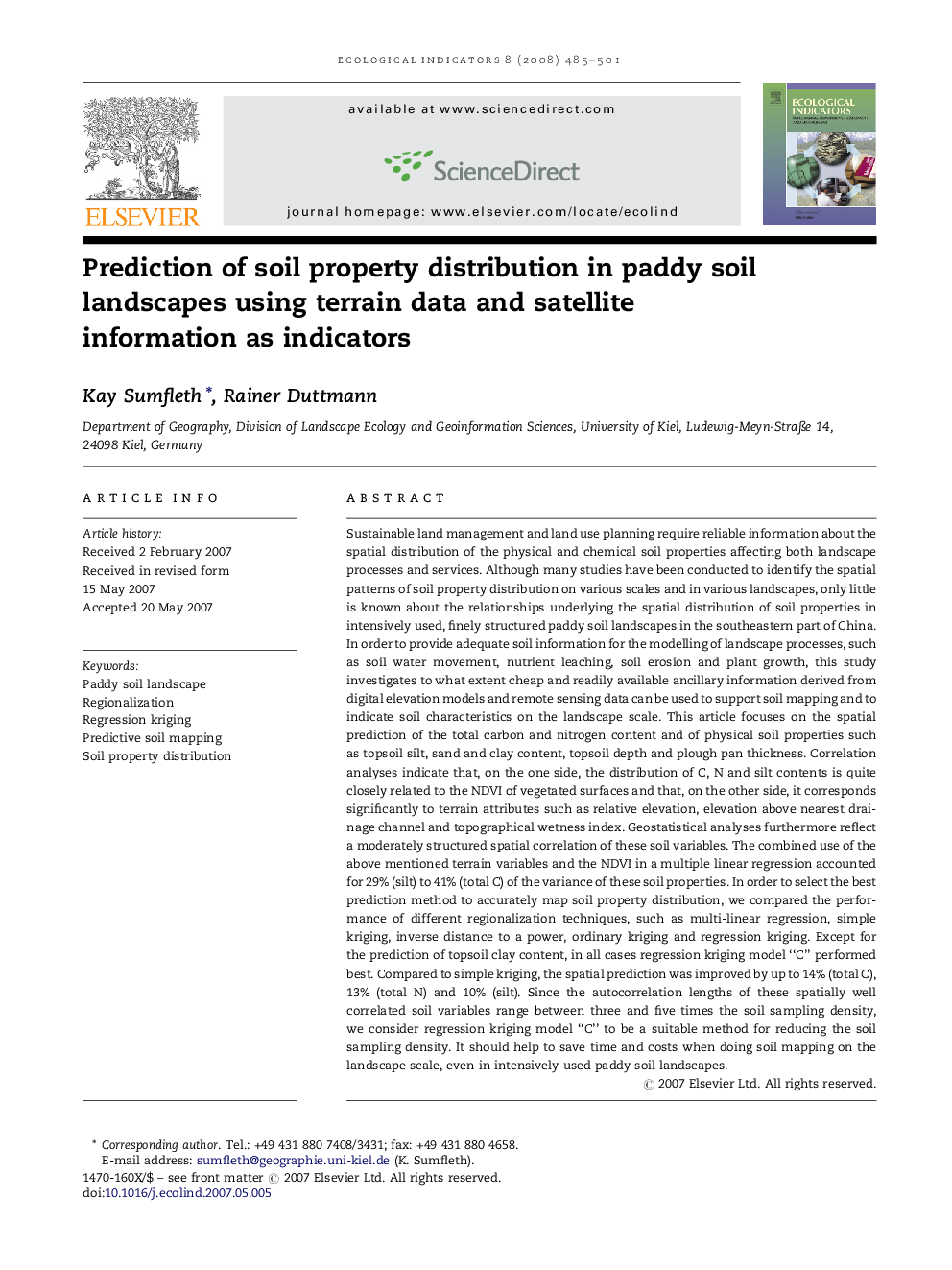| کد مقاله | کد نشریه | سال انتشار | مقاله انگلیسی | نسخه تمام متن |
|---|---|---|---|---|
| 4374393 | 1303172 | 2008 | 17 صفحه PDF | دانلود رایگان |

Sustainable land management and land use planning require reliable information about the spatial distribution of the physical and chemical soil properties affecting both landscape processes and services. Although many studies have been conducted to identify the spatial patterns of soil property distribution on various scales and in various landscapes, only little is known about the relationships underlying the spatial distribution of soil properties in intensively used, finely structured paddy soil landscapes in the southeastern part of China. In order to provide adequate soil information for the modelling of landscape processes, such as soil water movement, nutrient leaching, soil erosion and plant growth, this study investigates to what extent cheap and readily available ancillary information derived from digital elevation models and remote sensing data can be used to support soil mapping and to indicate soil characteristics on the landscape scale. This article focuses on the spatial prediction of the total carbon and nitrogen content and of physical soil properties such as topsoil silt, sand and clay content, topsoil depth and plough pan thickness. Correlation analyses indicate that, on the one side, the distribution of C, N and silt contents is quite closely related to the NDVI of vegetated surfaces and that, on the other side, it corresponds significantly to terrain attributes such as relative elevation, elevation above nearest drainage channel and topographical wetness index. Geostatistical analyses furthermore reflect a moderately structured spatial correlation of these soil variables. The combined use of the above mentioned terrain variables and the NDVI in a multiple linear regression accounted for 29% (silt) to 41% (total C) of the variance of these soil properties. In order to select the best prediction method to accurately map soil property distribution, we compared the performance of different regionalization techniques, such as multi-linear regression, simple kriging, inverse distance to a power, ordinary kriging and regression kriging. Except for the prediction of topsoil clay content, in all cases regression kriging model “C” performed best. Compared to simple kriging, the spatial prediction was improved by up to 14% (total C), 13% (total N) and 10% (silt). Since the autocorrelation lengths of these spatially well correlated soil variables range between three and five times the soil sampling density, we consider regression kriging model “C” to be a suitable method for reducing the soil sampling density. It should help to save time and costs when doing soil mapping on the landscape scale, even in intensively used paddy soil landscapes.
Journal: Ecological Indicators - Volume 8, Issue 5, September 2008, Pages 485–501